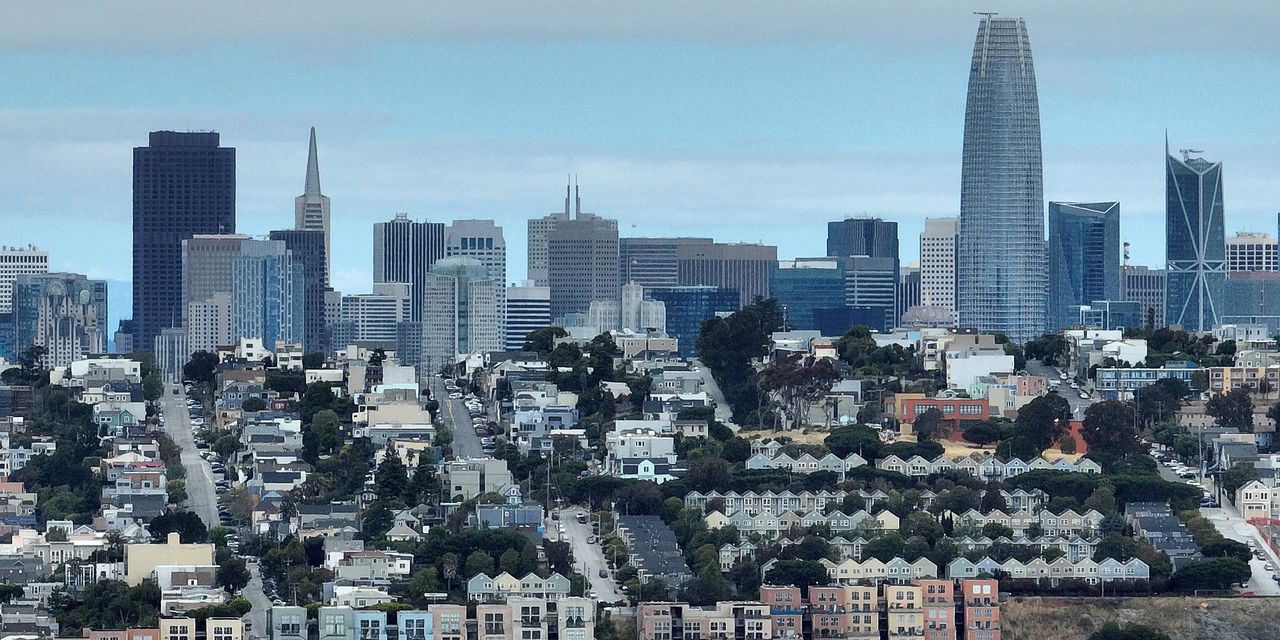Barry DiRaimondo, chief of SteelWave, a West Coast property developer that in the past half-century has partnering with many of the biggest names in commercial real estate, is looking for diamonds in the rough, distressed office properties located in the American city that many have given up on.
Others may be shunning San Francisco while it’s down on its luck, but DiRaimondo sees better days ahead, despite the city’s threat of a growing deficit, its fentanyl crisis, homelessness and a reluctant return of office workers to its financial core.
“Not much is coming up right now,” DiRaimondo said of buying opportunities, while speaking from his office in the heart of San Francisco’s financial district. But he was eager to point out several nearby buildings that could be candidates to buy, at the right price.
“I think over the next 12 to 18 months, you’re going to see a tsunami,” of distressed office properties, DiRaimondo said.
Like in many big cities, a wave of office buildings bought at peak prices before the pandemic now have a pile of debt coming due, at much higher rates. But San Francisco’s financial core only recently has begun to show flickers of hope in its weak recovery post-COVID.
“Whether it’s San Francisco, Oakland or anywhere here, and your debt is rolling, you’re having a conversation with your lender,” DiRaimondo said. “There’s either a restructuring going on or a foreclosure going on.”
A number of high-profile property owners this year surrendered local properties to lenders, including Westfield’s namesake shopping center downtown and a string of well-known hotels, a blow to the city’s comeback efforts.
Still, DiRaimondo expects the bulk of property ownership transfers in this boom-and-bust cycle to take place quietly, behind the scenes, often through a building’s debt changing hands. It’s a familiar playbook for veteran real-estate developers like SteelWave and its partners, especially when San Francisco office property values tumble and new loans remains expensive and hard to come by.
“Office is a nasty word, right now. Especially tech office,” he said. “We are doing something that’s a bit different.”
Booms, busts
San Francisco’s history as a boom-and-bust town perhaps is best suited for real-estate developers able to take a bunch of lemons and make lemonade.
That has been SteelWave’s signature move in the notoriously rough-and-tumble commercial real-estate industry, through its ups and downs. It has bought over $17.5 billion in properties and developments in the past five decades, first under the Legacy Partners Commercial brand before it was renamed in 2015.
It has partnered with some of the biggest names in commercial real estate, including with Angelo Gordon & Co. in 2021 on two Silicon Valley office buildings, but also distressed debt titans that include Rialto Capital, and with Chenco, one of the largest Chinese-owned U.S. real-estate investment firms.
Its stronghold is the Bay Area and DiRaimondo is now looking to raise a $500 million fund to buy distressed buildings, including in downtown San Francisco, a place major Wall Street lenders have been backing away from for months.
“It’s hard to raise equity to buy this stuff right now,” he said, but argues his strategy, which includes expanding its reach to potential investors in the U.A.E., Israel and parts of Europe, will pan out.
SteelWave’s model of buying a property includes a final tally of costs often three to four times the initial purchase price, due to extensive overhauls.
“Typically, what we do is buy something, tear it apart, put it back together, lease it, sell it,” DiRaimondo said.
It’s niche in the distressed world that’s already produced overhauls of buildings from Seattle to Colorado to Los Angeles, places the tech industry wants to lease.
In the southern California town of Costa Mesa, that meant partnering with Invesco to turn an old newsroom and printing press for the Los Angeles Times into a creative work campus. An opinion piece in 2022 from the newspaper described the revamp as turning, “the glum newspaper architecture into something inviting.”
Forget being a ‘rent bandit’
“In New York, people rushed back and refilled the apartments, streets, and subways. Restaurants and stores flooded with customers again,” a team from Moody’s analytics wrote in a recent “tale of two cities” report. “San Francisco, on the other end, battled safety concerns, homelessness, and population exodus which existed before but only became more obvious with barren neighborhoods.”
SteelWave thinks the old days of landlords raking in top-dollar commercial rents in San Francisco, while adding little back to office buildings, are a thing of the past.
“You have to have owners who want to create cool work environments to attract people back into the city,” DiRaimondo said of downtown San Francisco’s long slog back from the brink.
That means buying properties at low prices, but also risking putting money down for major improvements. He isn’t a distressed investors looking to become a “rent bandit,” he says, because the strategy will fail to get quality tenants.
Like the Moody’s team, DiRaimondo thinks San Francisco eventually will bounce back, but he thinks not before reality hits older office properties.
Take a “commodity” building downtown, often older and midblock with generic features, that previously might have been worth $750 to $800 a square foot. It now looks worth less than $300 a square foot, he said.
The early stages of fire-sales have begun already, with the 22-story tower at 350 California, nearby to DiRaimondo’s office, reportedly fetching $200 to $225 a square foot.
“San Francisco is not dead,” DiRaimondo said. “I think there are opportunities in San Francisco.”
See: San Francisco’s office market erases all gains since 2017 as prices sag nationally
Read the full article here





